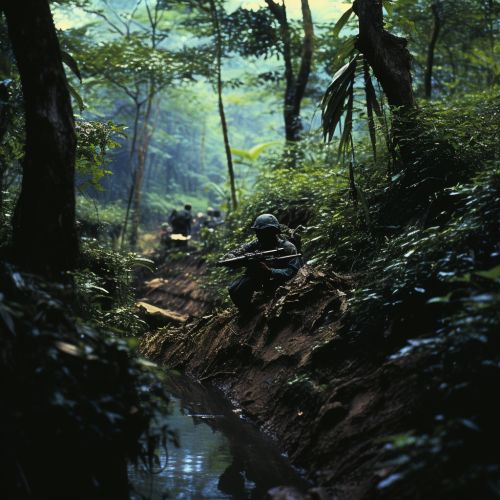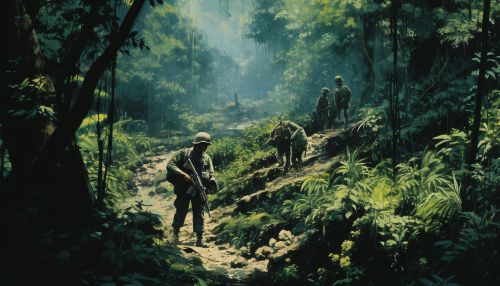Vietnam War
Background
The Vietnam War, also known as the Second Indochina War, was a conflict in Vietnam, Laos, and Cambodia from 1 November 1955 to the fall of Saigon on 30 April 1975. It was the second of the Indochina Wars and was officially fought between North Vietnam and South Vietnam. North Vietnam was supported by the Soviet Union, China, and other communist allies; South Vietnam was supported by the United States, South Korea, the Philippines, Australia, Thailand, and other anti-communist allies.


Causes
The war, considered a Cold War-era proxy war by some, lasted almost 20 years, with direct U.S. involvement ending in 1973, and included the Laotian Civil War and the Cambodian Civil War, which ended with all three countries becoming communist in 1975.
Course of the War
The conflict emerged from the First Indochina War between the French colonial forces and the Viet Minh communist nationalist revolutionaries. After the French quit Indochina in 1954, the US assumed financial and military support for the South Vietnamese state.
Tactics and Techniques
The Viet Cong, also known as the National Liberation Front, was a mass political organization in South Vietnam and Cambodia with its own army – the People's Liberation Armed Forces of South Vietnam (PLAF) – that fought against the United States and South Vietnamese governments during the Vietnam War.
Impact and Consequences
The Vietnam War exacted a huge human cost in terms of fatalities, including 3 to 4 million Vietnamese from both sides, 1.5 to 2 million Laotians and Cambodians, and 58,209 U.S. soldiers.
Legacy
The war left significant legacies. It is often associated with the protests of the 1960s and 1970s, and its impact on veterans was profound, with many suffering from post-traumatic stress disorder and other war-related illnesses.
